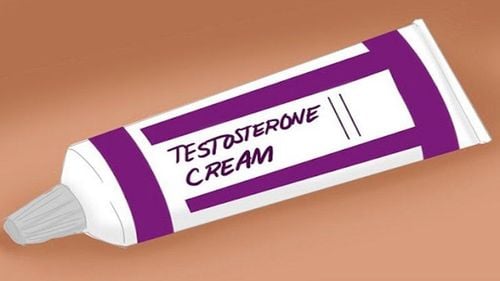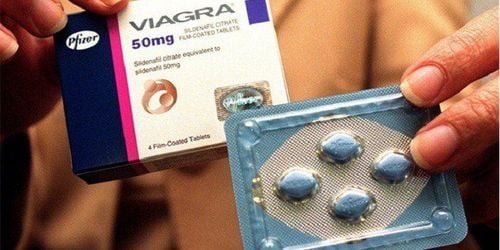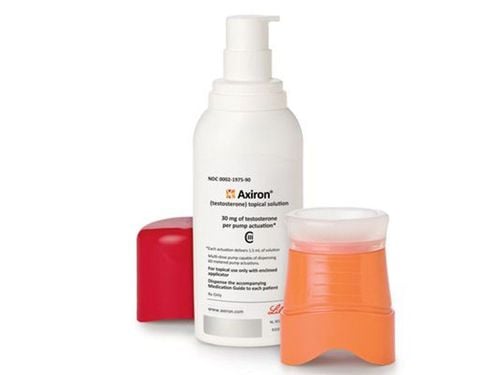This is an automatically translated article.
Testosterone is a hormone that plays an important role in male reproductive health and sexual performance. However, few people can clearly and correctly understand this hormone. In the article below, we will bring out the facts about testosterone that many people are probably still mistaken about it.1. Low sex drive isn't necessarily due to low testosterone levels
According to the law of nature, sex drive and erection ability of "little boy" will decrease gradually with age. However, signs such as having little or no sex drive all indicate that men are likely to have low testosterone levels. According to research, nearly 40% of sexes aged 45 and over are diagnosed by doctors with low testosterone levels. Because the symptoms of low testosterone levels are often vague, and moreover, men rarely disclose their condition to their doctor, so the number of men with low testosterone levels in the real world. economy could be much higher.2. Low testosterone is not a sign of aging
As age increases, the level of testosterone in the blood decreases. However, testosterone levels can be significantly lower than normal at a certain age, and it is not an inevitable part of the aging process. Low blood testosterone levels can have serious effects on your quality of life and overall health. However, the condition can still be treated.3. Signs of low testosterone levels
Low testosterone can change some of the typical masculine characteristics in men, including painful or swollen breasts, breast enlargement. Some other signs to watch out for include hair loss or hair loss, less shaving, smaller testicles, and difficulty achieving or keeping an erection. Additionally, hot flashes are common in men with low testosterone levels.4. Low Testosterone Affects Bones
Testosterone is a factor that not only affects sex life, but also plays an essential role in the process of building strong bones. A lack of this hormone in the body can lead to weak bones, osteoporosis, thin bones and easy fractures. In addition, testosterone also contributes to keeping muscles strong, creating red blood cells and enhancing emotional arousal. Low testosterone can cause anemia, depression and difficulty concentrating.
Testosterone thấp có thể gây thiếu máu, trầm cảm và khó tập trung
5. Determination of testosterone levels through a blood test
Not everyone has obvious symptoms of low testosterone. Only a blood test can tell exactly what your testosterone levels are. According to the Endocrine Society, normal testosterone levels will range from 300-1,200 ng/dL, if below 300 ng/dL, a person has low testosterone levels. Doctors often use blood tests and a number of symptoms to determine if treatment is needed.6. Low testosterone is not the "culprit" of baldness
Entering puberty, testosterone will begin to affect the growth of beard, hair and body hair in men. From puberty, when a boy starts to have beard and pubic hair, testosterone affects hair growth in men. Low testosterone can cause you to lose hair or hair on areas of your body, but it does not cause male pattern baldness. The main "culprit" is probably genetics.7. Increasing Testosterone Levels Doesn't Cure Erectile Dysfunction
Low testosterone can be one of the causes of erectile dysfunction (ED) - the inability to achieve or keep an erection during sex or during sleep. To treat this condition, testosterone therapy may be recommended. However, in some cases, testosterone treatment for ED did not improve the disease, perhaps due to other objective reasons. For example, diseases of the nerves and blood vessels can affect the ability of the penis to get an erection, thereby causing ED. If you have ED, it is best to consult a specialist to find the best treatment for the disease.8. Symptoms of low testosterone usually begin at age 40
From the age of 40 onwards, a man's testosterone levels will start to decrease by about 1% per year. This decline is a very normal rule as men age. Men with below-normal testosterone levels may or may not have symptoms of the decline. Once the condition is discovered, your doctor may recommend treatment with testosterone supplementation therapy.9. Obesity affects testosterone levels
Obesity increases the risk of low testosterone in the blood. Studies have shown that nearly 40% of men over 45 who are obese have lower than average blood testosterone levels. Men with metabolic syndrome such as high blood pressure, high blood sugar, belly fat, high blood fat, etc. are at high risk of having low testosterone levels.10. Remedies for Low Testosterone
Testosterone replacement therapy has been around since the 1940s. One of the most classic ways to increase testosterone is with testosterone injections, usually given at regular intervals over several weeks. Testosterone supplements are also widely used in the United States. You can apply the gel to your shoulders, abdomen or upper arms daily. The general goal of treatment is to raise the level of testosterone in the blood to a moderate range - about 400-700 ng/dL. Other methods include patches or pills taken by mouth.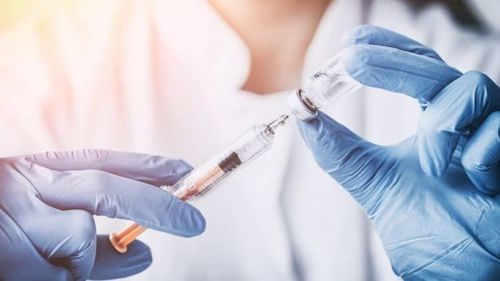
Một trong những cách kinh điển nhất để tăng testosterone là tiêm testosterone
11. Taking anabolic steroids does not increase testosterone
Anabolic steroids are a man-made hormone with androgen-like properties. Some athletes often use anabolic steroids because it has similar effects to natural testosterone to increase muscle strength. However, in fact, when using anabolic steroids cannot increase testosterone, it even increases aggression in men, causing severe acne, tremors, shrinking testicles, reducing sperm count. sperm count and baldness.12. Drugs that affect testosterone levels
Finasertide, used to treat male pattern baldness, may increase blood levels of testosterone. While, a number of other drugs can lower testosterone, including corticosteroids (such as prednisone, which is used for inflammatory conditions) and long-acting narcotics, such as oxycodone and morphine. Medications used to treat advanced prostate cancer can also lower testosterone levels.13. Testosterone supplements seriously affect some diseases
Testosterone replacement therapy can make certain medical conditions worse, such as sleep apnea. It is not recommended for use in men with severe sleep apnea, severe prostate enlargement, or lower urinary tract infections. Other conditions that should not be combined with testosterone therapy include prostate cancer, male breast cancer, and uncontrolled or poorly controlled congestive heart failure.14. Alcoholism Can Lower Testosterone Levels
Alcohol or alcohol-containing substances directly damage the testicles - the place where a man's testosterone is produced. It also affects the release of other hormones related to male sexual function and fertility. In addition to a decreased sex drive, men who drink alcohol and have liver disease are at an increased risk of testicular shrinkage. In addition, men who regularly drink alcohol also experience enlarged breasts because alcohol can help convert testosterone into the female hormone estrogen.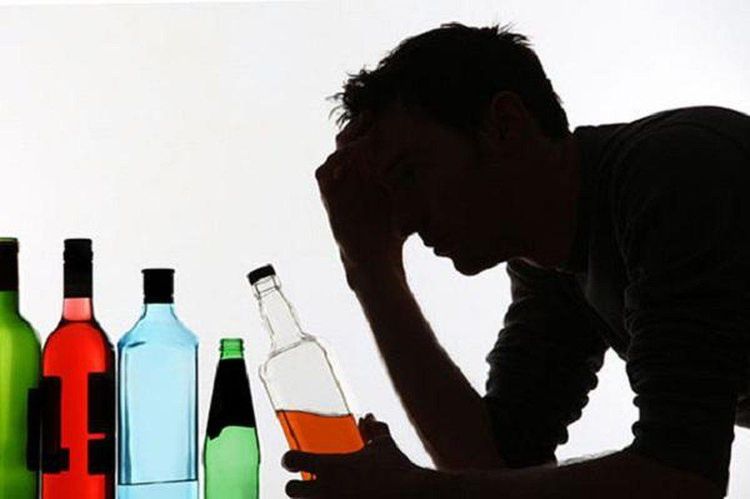
Rượu hay các chất có chứa cồn đều gây hại trực tiếp tới tinh hoàn- nơi sản xuất testosterone của nam giới
15. Most men with low testosterone levels go untreated
According to statistics, up to 9 out of 10 men with symptoms of low testosterone go untreated. Because many of them attribute the symptoms of low testosterone to symptoms of other diseases or think it is an inevitable part of aging. If you have any of these symptoms and feel it affects your quality of life and well-being, see your doctor for advice.Please dial HOTLINE for more information or register for an appointment HERE. Download MyVinmec app to make appointments faster and to manage your bookings easily.
Reference source: Webmd.com



